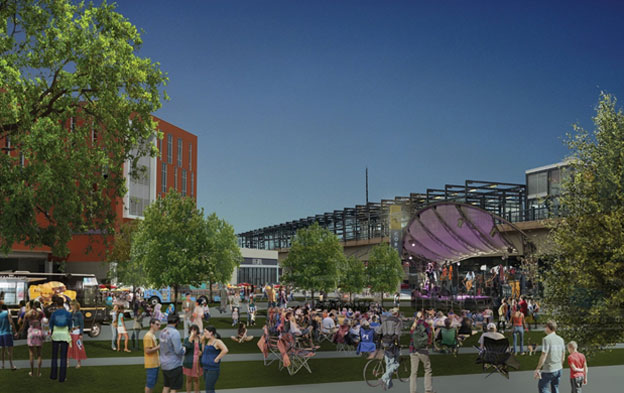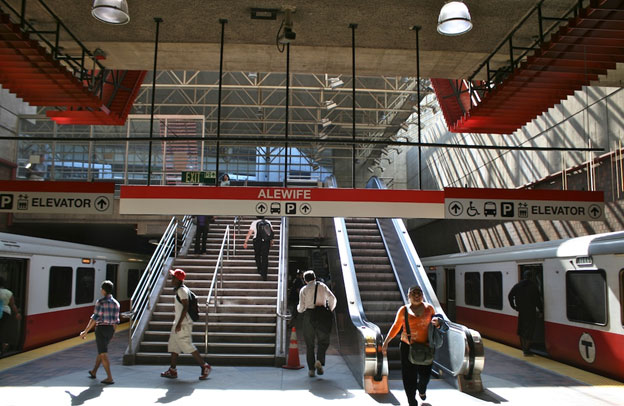Transit Oriented Development is compact, mixed-use development near transit facilities providing high-quality walking environments. It usually includes new residential development, office space, and other service amenities that are within a half-mile of public transportation and easily commutable by other means such as walking and biking. TOD typically creates sustainable neighborhoods that provide a convenient, affordable, and active lifestyle.
There are two broad types of TODs, both of which are developed around transit systems. Urban TODs located in or near city centers in close proximity to main light rail, heavy rail, and/or express bus routes. They feature high density residential and commercial developments and employment clusters. Neighborhood TODs are located along the feeder lines or bus routes further away from the urban core. While neighborhood TODs also feature mixed residential commercial uses, densities are not normally as high as urban TODs.
The potential benefits of TODs may include:
By increasing access to public transit, TOD facilitates growth in transit ridership and a corresponding reduction in vehicular traffic and parking demand in TOD developments. TOD is also often used with other value capture strategies including joint development and special assessment districts.
Planning for TOD has focused on forecasting the benefits that such developments bring to transit investments. The impetus for this dates back to the focus on the Metropolitan Planning Organization (MPO) process in the Intermodal Surface Transportation Efficiency Act (ISTEA) of 1991 and the Transportation Equity Act for the 21st Century (TEA-21) of 1998. TEA-21 mandated that the MPO process, "Protect and enhance the environment, promote energy conservation, and improve the quality of life," and also stipulated that it should include land use analysis and growth management strategies to achieve specific development goals. In addition, the legislation tied funding for New Starts transit projects to their performance in these areas. Together these dynamics have led MPOs around the county to include TOD in their regional plans and have made public funding available to support community infrastructure costs.
In 2003, the Hennepin County Board of Commissioners created a transit oriented development program to support the redevelopment and construction of new transit lines and encourage transit ridership. To date, the county has awarded more than $29 million in funding to urban and suburban TOD developments along major transit corridors including the MetroTransit Blue, Green, and Red lines. The Lake Street Transit Village is a transformational TOD project in the Corcoran neighborhood near the Lake Street/Midtown Station on the Blue Line in south Minneapolis. It opened in 2017 and combines a new county Human Services Center, retail space and more that 500 units of housing immediately west of the Lake Street/Midtown Station. Additional housing will be phased in over time. The development complements a new $45 million senior housing project located near the station and the Midtown Farmer's Market, which attracts over 66,000 annual visitors. The Lake Street Transit Village is one of many transit oriented communities to be developed in the Minneapolis / St. Paul region in the past 15 years.

Lake Street Transit Village
photo credit: MetroTransit
Davis Square is located in Summerville, Massachusetts, north of Cambridge at the terminus of the Massachusetts Bay Transportation Authority (MBTA) Red Line. Prior to the extension of the Red Line the area had been in decline. Officials and local residents established the Davis Square Task Force to develop plans to revitalize the neighborhood using the creation of the new MBTA station as a catalyst. The plan called for repurposing existing buildings, new construction, improving streets and parking, and creating pedestrian amenities. The city worked with state and federal agencies to raise funding for the following TOD improvements:
Together these improvements transformed Davis Square into one of the first transit oriented communities in the U.S.
